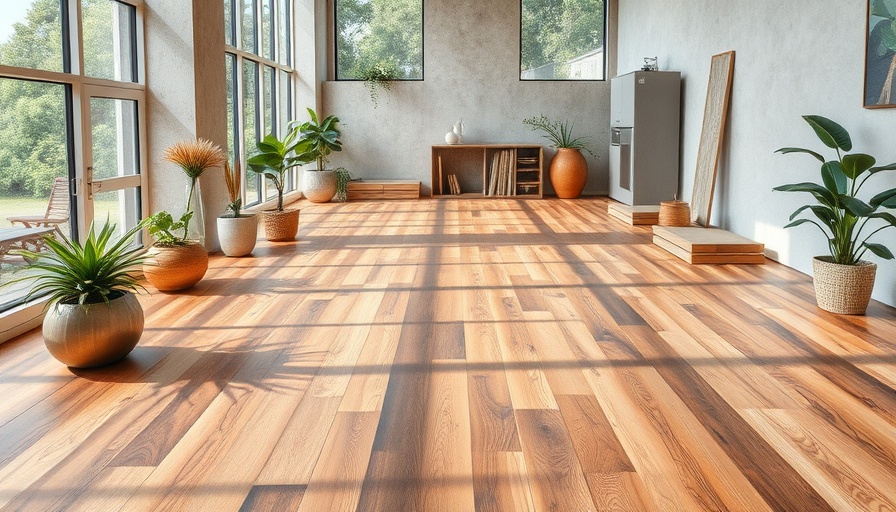
Recycled Flooring: A Sustainable Choice Despite Challenges
In recent years, the push towards eco-friendly materials in construction has elevated the conversation around recycled flooring. While opting for recycled materials can hold several advantages from an environmental perspective, such as reducing landfill waste and conserving natural resources, the complexities involved often create reservations for homeowners and builders alike. As illustrated through a personal endeavor with a Junckers floor—a Danish brand known for its solid wood flooring—it's vital to weigh the benefits against potential challenges.
Historical Context: The Evolution of Recycled Materials in Construction
Historically, using recycled materials has roots in necessity during post-war reconstruction. However, modern trends have emphasized sustainability, prompting companies like Junckers to introduce innovative practices that ensure minimal waste occurs throughout the production process. Reused gym floors, such as the one encountered during this project, symbolize this shift and highlight the growing popularity of sustainable design in home building.
Understanding the Value of Junckers Flooring
Junckers flooring stands as a prime example of how recycled materials can meet high-quality design standards. The decision to employ such flooring—initially salvaged from gyms—underscores a commitment to sustainability without compromising aesthetics. Solid wood implies durability, and the ability to sand it down numerous times lengthens its lifespan considerably. However, as the author discovered, opting for un-lacquered panels requires careful management during storage to prevent moisture issues, which can lead to significant challenges.
A Lesson in Protection: Lacquered vs. Un-lacquered Flooring
The experience with untreated Junckers flooring during a notably damp September demonstrates the critical impact of protective finishes. While the desire to maintain natural aesthetics is understandable, the lack of lacquer led to moisture absorption that jeopardized the integrity of the wood. This scenario highlights a frequent misconception about recycled flooring—that it needs no special care. Future installations might consider a balance between aesthetics and moisture resistance to avoid similar pitfalls.
Practical Insights: Handling Challenges in Recycled Flooring Installations
When faced with hurdles, adaptability is paramount. The author’s husband, John, illustrates innovative thinking and resourcefulness. After purchasing a second-hand dehumidifier and experimenting with sanding techniques, he showcases how dynamic problem-solving can breathe life into recycled projects. Homeowners attempting similar renovations should remain resilient and open to experimentation, as the right tools and creative approaches can turn potential failures into success stories.
Future Predictions: The Increasing Popularity of Recycled Flooring
As consumer preferences lean increasingly towards sustainability, the market for recycled flooring is likely to expand. Brands that emphasize recyclability and durability will likely flourish while those disregarding environmental impacts could struggle to remain relevant. Engaging skilled professionals in sustainable practices promises better outcomes and longevity for recycled materials, creating more positive prospects within this niche.
Conclusion: Making Efficient Use of Recycled Flooring
Choosing recycled flooring can undoubtedly provide environmental and economic benefits. However, it often carries a set of challenges that can deter homeowners. By adhering to effective storage practices, understanding the value of protective finishes, and embracing thoughtful problem-solving, individuals can find value in these sustainable materials without compromise. As you move forward in your renovation journey, consider the lessons learned here and remain committed to sustainability with an adaptable mindset.
 Add Row
Add Row  Add
Add 




Write A Comment